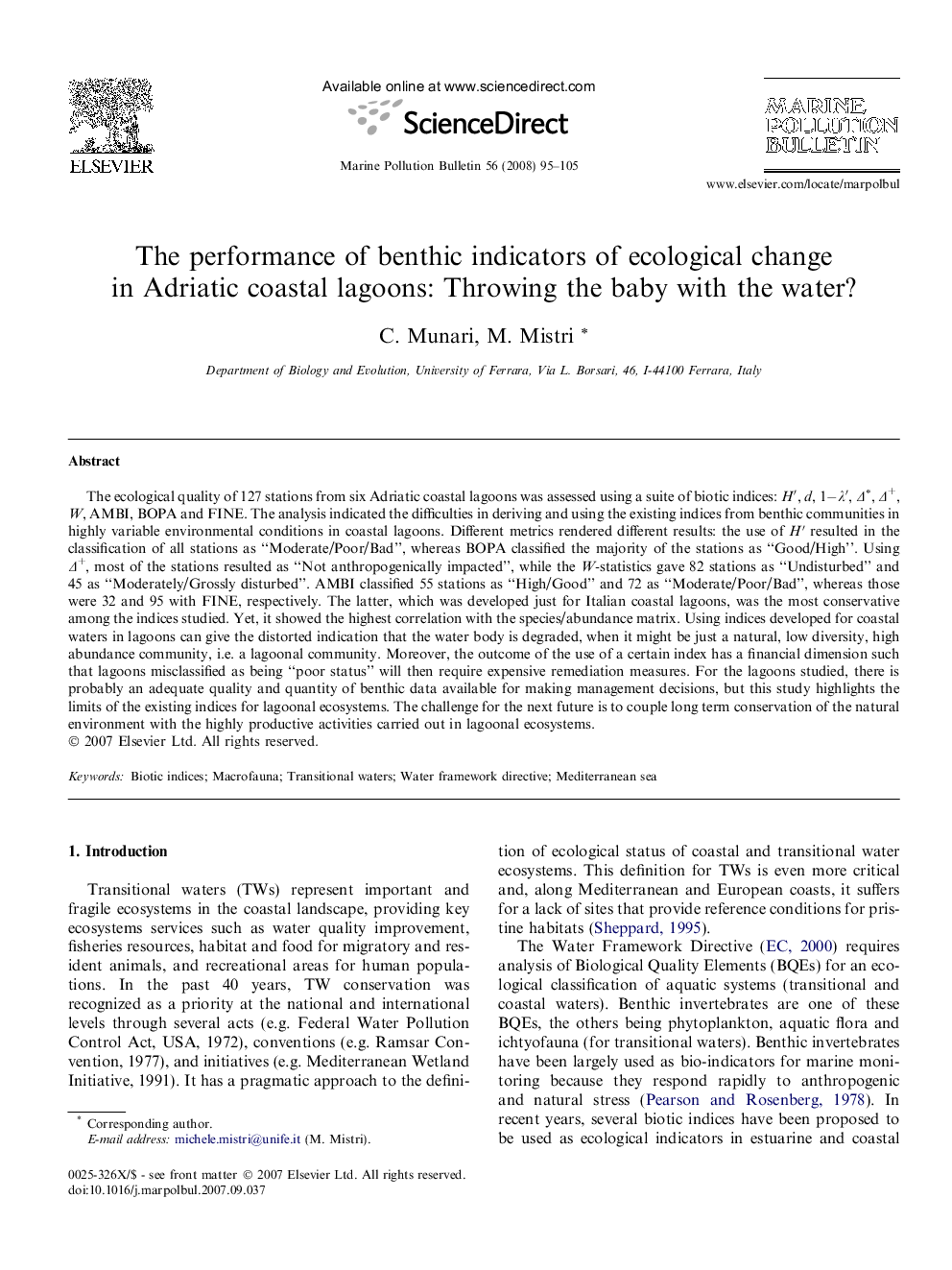| Article ID | Journal | Published Year | Pages | File Type |
|---|---|---|---|---|
| 4477201 | Marine Pollution Bulletin | 2008 | 11 Pages |
The ecological quality of 127 stations from six Adriatic coastal lagoons was assessed using a suite of biotic indices: H′, d, 1−λ′, Δ∗, Δ+, W, AMBI, BOPA and FINE. The analysis indicated the difficulties in deriving and using the existing indices from benthic communities in highly variable environmental conditions in coastal lagoons. Different metrics rendered different results: the use of H′ resulted in the classification of all stations as “Moderate/Poor/Bad”, whereas BOPA classified the majority of the stations as “Good/High”. Using Δ+, most of the stations resulted as “Not anthropogenically impacted”, while the W-statistics gave 82 stations as “Undisturbed” and 45 as “Moderately/Grossly disturbed”. AMBI classified 55 stations as “High/Good” and 72 as “Moderate/Poor/Bad”, whereas those were 32 and 95 with FINE, respectively. The latter, which was developed just for Italian coastal lagoons, was the most conservative among the indices studied. Yet, it showed the highest correlation with the species/abundance matrix. Using indices developed for coastal waters in lagoons can give the distorted indication that the water body is degraded, when it might be just a natural, low diversity, high abundance community, i.e. a lagoonal community. Moreover, the outcome of the use of a certain index has a financial dimension such that lagoons misclassified as being “poor status” will then require expensive remediation measures. For the lagoons studied, there is probably an adequate quality and quantity of benthic data available for making management decisions, but this study highlights the limits of the existing indices for lagoonal ecosystems. The challenge for the next future is to couple long term conservation of the natural environment with the highly productive activities carried out in lagoonal ecosystems.
